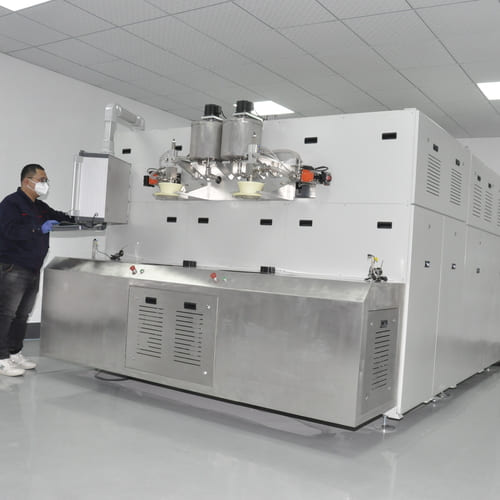Are you curious about the future of catalytic converters? How will upcoming regulations impact the industry? What trends should wholesalers keep an eye on to stay competitive in the market? Let’s delve into these questions and explore the future of catalytic converters.
The future of catalytic converters is closely tied to evolving emission standards and technological advancements. As regulations become stricter worldwide, the demand for more efficient and effective catalytic converters is expected to rise. Wholesalers must stay informed about these changes to adapt their inventory and strategies accordingly.
The catalytic converter industry is poised for significant transformation. From the rise of electric vehicles to advancements in catalyst materials, numerous factors are shaping the future. Wholesalers need to keep abreast of these developments to maintain a competitive edge and meet the evolving demands of their customers.

What are the key trends impacting the future of catalytic converters?
1. Stricter Emission Standards?
Governments worldwide are implementing stricter emission standards to combat pollution. The European Union’s Euro 7 standards and California’s stringent emission regulations are prime examples. These regulations will require vehicles to have more advanced catalytic converters to reduce harmful emissions effectively. Wholesalers should be aware of these changes and stock catalytic converters that meet these new standards.

2. Advances in Catalyst Materials?
Research and development in catalyst materials are driving the evolution of catalytic converters. Materials like cordierite and silicon carbide are being used to enhance the efficiency and durability of catalytic converters. These materials can withstand higher temperatures and offer better performance. Wholesalers should look for products that utilize these advanced materials to provide customers with the latest technology.
3. Growth of Electric Vehicles (EVs)?
The rise of electric vehicles poses a unique challenge and opportunity for the catalytic converter market. While EVs do not require traditional catalytic converters, hybrid vehicles do. The growth of hybrid vehicles, which use both internal combustion engines and electric power, will still drive demand for catalytic converters. Wholesalers should diversify their offerings to include products for hybrid vehicles to cater to this emerging market.
4. Innovation in Three-Way Catalysts?
Three-way catalysts (TWCs) are crucial for reducing nitrogen oxides (NOx), carbon monoxide (CO), and hydrocarbons (HC) in vehicle emissions. Innovations in TWC technology are focusing on improving conversion efficiency and reducing precious metal content to lower costs. Wholesalers should keep an eye on these innovations to offer more cost-effective and efficient products.
5. Adoption of VOC Catalysts in Industrial Applications?
Volatile Organic Compounds (VOC) catalysts are becoming increasingly important in industrial applications to reduce emissions from manufacturing processes. As industries aim to comply with environmental regulations, the demand for VOC catalysts is expected to rise. Wholesalers should consider expanding their product lines to include VOC catalysts for industrial customers.
How can wholesalers stay ahead in the catalytic converter market?
1. Stay Informed About Regulatory Changes?
Keeping up-to-date with emission regulations is crucial for wholesalers. Regulations can vary by region, so understanding local and global standards will help wholesalers stock the right products. Subscribing to industry newsletters and attending conferences can provide valuable insights into upcoming regulatory changes.
2. Invest in Quality Products?
Investing in high-quality catalytic converters made from advanced materials like cordierite and silicon carbide can give wholesalers a competitive edge. These products offer better performance and longevity, meeting the demands of stricter emission standards.

3. Diversify Product Offerings?
Diversification is key to staying relevant in a changing market. Wholesalers should consider expanding their inventory to include products for hybrid vehicles, three-way catalysts, catalytic converter for diesel vehicles and VOC catalysts. This approach will help cater to a broader customer base and meet diverse needs.
4. Leverage Technology and Data?
Using technology and data analytics can help wholesalers manage inventory more efficiently and predict future demand trends. Implementing advanced inventory management systems and using data to forecast trends can reduce costs and improve customer satisfaction.

What challenges do wholesalers face in the catalytic converter market?
1. Supply Chain Disruptions?
Supply chain disruptions can significantly impact the availability of catalytic converters. Wholesalers should build strong relationships with reliable suppliers and consider diversifying their supply chain to mitigate risks.
2. Rising Costs of Raw Materials?
The cost of raw materials used in catalytic converters, such as precious metals, is subject to market fluctuations. Wholesalers need to monitor these costs and adjust their pricing strategies accordingly to maintain profitability.
3. Counterfeit Products?
The market for catalytic converters is not immune to counterfeit products. Wholesalers must ensure they source products from reputable manufacturers to maintain quality and trust with their customers.

Conclusion
The future of catalytic converters is shaped by evolving emission standards, technological advancements, and the rise of electric vehicles. Wholesalers must stay informed about these trends and adapt their strategies to remain competitive. By investing in quality products, diversifying their offerings, and leveraging technology, wholesalers can navigate the challenges and seize opportunities in the catalytic converter market.


